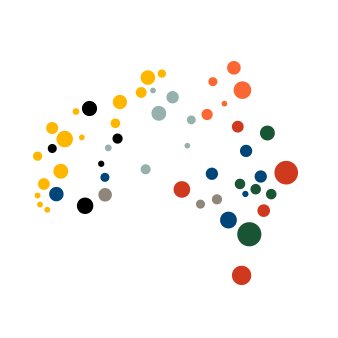
UNSW Aust. Centre for Space Engineering Research
@ACSERUNSW
Followers
1K
Following
208
Media
472
Statuses
1K
The Australian Centre for Space Engineering Research (ACSER) at UNSW aims to develop local space capabilities through research & education. Image: ESA/NASA
Sydney, AUSTRALIA
Joined February 2014
Cubesats: how you can be involved in space exploration without spending millions https://t.co/GXBpaFJ7ov
unsw.edu.au
1
0
2
Such amazing news - the worlds biggest and most exciting space event will be here in Sydney in 2025! So much to do, so little time! We look forward to welcoming the world's best, brightest and most forward thinking, optimistic minds to our sunny shores!
The world's biggest space event is coming to Sydney! Thank you to the @iafastro. We look forward to working together and saying G’day to the global space sector for #IAC in 2025. This achievement wouldn't have been possible without @spaceindustryoz, @InvestmentNSW and @BESydney
1
1
2
Great presentation from our own Nicholas Bennett on Lunar Propellant at @IACParis2022 #IAC2022
0
2
5
Great to see ACSER's own Stuart Bartlett catching up with our old friends Florian & Benny from @UniBremen! Looking forward to more collaborations with these guys very soon! #IACParis2022
0
0
3
Profs Dempster and Saydam and the world's largest dirty thermal vacuum chamber at KICT Korea. KICT and UNSW/ACSER are collaborating on characterising lunar regolith.
0
2
9
After two days #Cubesat2022 is about to wrap up. Thanks to the presenters, chairs, attendees and organisers for organising the event.
0
1
7
Ignatius Rivaldi from @ACSERUNSW has been working on adapting the Kea GPS receivers so that they can be used for performing GPS reflectometry on CUAVA-2. Received SNR has been improved, power consumption lowered, EMI reduced and usability improved. #Cubesat2022
0
0
2
Maquarie University's Dr Ediz Cetin has been working on making cubesats reliable using reconfigurable logic. They have a product called TLegUp that converts high level C into a triplicated FPGA implementation. #Cubesat2022
0
0
2
Kanyini incorporates a HyperScout 2 hyperspectral scanner operating in a 'push broom' configuration, says Nadia Sarunic from the @SmartSatCRC It will perform on-board processing to detect bushfires. #Cubesat2022
0
1
1
A charge exchange thruster (CXT) is a novel thruster technology that will be tested on CUAVA-2. Prof Iver Cairns presents on behalf of Richard Bowde-Reid and Joe Khachan, who were unable to attend. A special magnetically levitated thrust balance was built to test it #Cubesat2022
0
0
1
Shagun Aggawal is an @ACSERUNSW PhD candidate working on an electrodynamic tether to be used to de-orbit CUAVA-2. The @SaberAstro DragEN tether is between 30 - 50 m in length. Correct deployment is critical if it is to be successful. #Cubesat2022
0
0
6
Data over power lines - applicable for cubesats according the Sydney University PhD candidate Yijun Huang. #Cubesat2022
0
0
2
Zihao Wang is a Sydney University PhD candidate who has designed a novel #magnetorquer that will be flown on the CUAVA-2 cubesat. Very low power, very high torque and rapid detumbling are features of this design. #Cubesat2022
0
0
0
Fitting a multispectral imager into CUAVA-2 is a challenge. Dr Chris Betters from Sydney University explains at #Cubesat2022 how a commercial camera lens was repurposed to achieve this.
0
0
2
CROSS is a star-tracker that will be flown on CUAVA-2. University of Sydney PhD candidate Joshua Critchley-Marrows explains at #Cubesat2022 how star-trackers are specialised payloads with limited global suppliers. There are only 2 global suppliers of the required coatings .
0
0
3
Interesting payloads scheduled for launch on the CUAVA-2 cubesat being launched by @Arc_Cuava, including the EDDI payload that will be used to detect plasma in space. Mr Quinn Musulin explains: #Cubesat2022
0
0
1
Mark Ramsey, the COO of @SpaceMachinesCo is presenting at #Cubesat2022 on their vision to provide "last mile space" transportation services using their Optimus vehicle. https://t.co/00WOlS5y2k
0
0
0
Extra-Terrestrial Power are developing medium cost silicon radiation tolerant solar cells that will be tested on the Waratah Seed spacecraft. #Cubesat2022
0
0
1
Interesting payloads set to launch on NSW Waratah Seed, including @DandelionsCloud payload. Dandelions are developing an orbital deployed patent pending cell base-station that include biodegradable materials. #Cubesat2022
0
0
2




